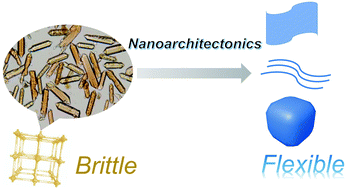Flexible films enabled by coordination polymer nanoarchitectonics
Abstract
The development of coordination polymers (CPs) originated from crystal engineering, which mainly focuses on crystals and their physico-chemical properties. This has now reached molecular- and nanoengineering, which push these CPs into practical applications. Depending on the application, the deformability of CPs becomes an important issue. To use CP films in flexible devices, it is necessary to develop CP films that can be bent/stretched. The present review illustrates how nanotechnology and supramolecular chemistry work cooperatively to make CP films soft through numerous procedures. These soft films show non-interrupted performances under mechanical deformation, demonstrating that CPs can be used in next-generation flexible devices.

- This article is part of the themed collection: Soft Materials Nanoarchitectonics


 Please wait while we load your content...
Please wait while we load your content...